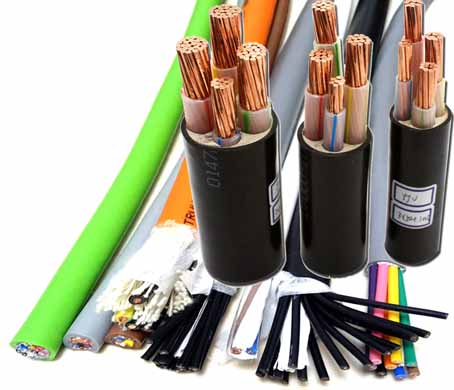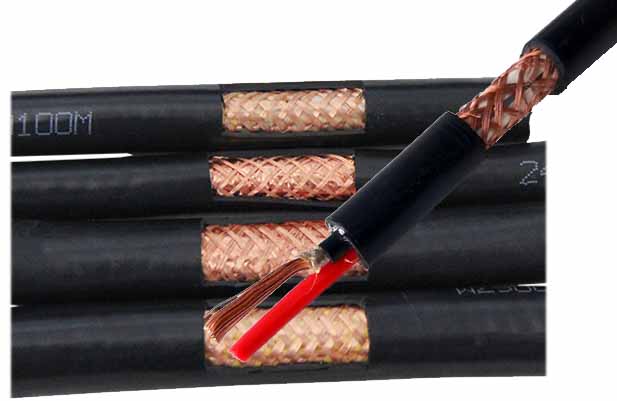UL and CSA fire-resistant cable standards

1. Finished fire-resistant cable conductor (Class R) DC resistance (in accordance with GB3956)
2. Power frequency voltage test: AC 50HZ3.5KV/5min without breakdown
IEC fire resistance rating: In order to assess the fire resistance of cables, the International Electrotechnical Commission has formulated three standards: IEC60332-1, IEC60332-2 and IEC60332-3. IEC60332-1 and IEC60332-2 are used to assess the fire resistance of a single cable when laid in an inclined and vertical position (corresponding to GB12666.3 and GB12666.4 in China) IEC60332-3 (corresponding to GB12666.5-90 in China, GB12666.5 has been replaced by GB/T 18380.3-2001) is used to assess the fire resistance of bundled cables during vertical combustion. In contrast, the fire resistance requirements of bundled cables are much higher when they are burned.
◎ IEC60332-1/BS4066-1 fire resistance rating (Flame Test On Single Vertical Insulated Wires/Cables) This is the fire resistance standard of a single cable. In the test, a 60cm-long cable is fixed vertically, the flame length of the propane burner is 175mm, and the flame cone is in contact with the cable at an angle of 45 degrees from a position 450mm from the upper fixed end of the sample. If the burning damage part of the sample is not more than 50mm from the lower part of the fixed end, the test passes.
◎ IEC60332-3/BS4066-3 fire resistance rating (vertical burning test of bundled wires or cables):
This is the fire resistance standard for bundled cables. The test stipulates that a bundle of 3.5m long cable samples is fixed on a trapezoidal test frame with iron wires, and the number of samples is determined by the non-metallic materials required by different classifications. The sample is hung vertically on the back wall of the combustion furnace, and the air is introduced into the combustion furnace through the air inlet on the bottom plate. The propane plane burner is in contact with the cable with a flame at 750°C. When the cable is forced to blow (air discharge 5m3/min, wind speed 0.9m/sec), it must not burn within 20 minutes of vertical combustion, and the cable will extinguish itself within 2.5 meters of flame spread. IEC60332 is divided into Class A, Class B, Class C and Class D to evaluate the fire resistance performance.

The UL fire resistance standard of the cable:
If any cable listed by UL has been tested and verified to meet a certain fire rating, the UL identification, fire rating and approval number can be printed on the cable.
◎ Supercharged level-CMP level (supply air combustion test / Steiner air duct test):
This is the most demanding cable (Plenum Cable) in the UL fire protection standard, and the applicable safety standard is UL910. The experiment stipulates that multiple cable samples are laid on the horizontal air duct of the device and burned with an 87.9KW gas lamp (300,000BTU/Hr) for 20 minutes. The eligibility criterion is that the flame cannot extend beyond 5 feet from the front end of the gas lamp flame. The peak value of the optical density is at most 0.5, and the average density value is at most 0.15. This kind of CMP cable is usually installed in the air return pressurization system used in ventilation ducts or air handling equipment, and is approved for use in Canada and the United States. FEP/PLENUM materials conforming to UL910 standard have better fire resistance than low-smoke halogen-free materials conforming to IEC60332-1 and IEC60332-3 standards, and the smoke concentration is lower when burned.
◎ Trunk level-CMR level (Riser Flame Test):
This is a riser cable in the UL standard, and the applicable safety standard is UL1666. The experiment stipulates that multiple samples are laid on the simulated vertical shaft and burned with the stipulated 154.5KW gas Bunsen burner (527,500BTU/Hr) for 30 minutes. The eligibility criterion is that the cable flame cannot spread to the upper part of a 12-foot-high room. There is no smoke density specification for trunk-level cables, and they are generally used for floor vertical and horizontal wiring.
◎ Commercial grade-CM grade (Vertial Tray Flame Test):
This is a general purpose cable in the UL standard, and the applicable safety standard is UL1581. The experiment stipulates that a number of samples are laid on a vertical stand of 8 feet high, and burned with a prescribed 20KW belt burner (70,000BTU/Hr) for 20 minutes. The qualification standard is that the flame cannot spread to the upper end of the cable and extinguish itself. UL1581 is similar to IEC60332-3C, except that the number of cables to be laid is different. Commercial-grade cables do not have smoke density specifications, and are generally only used for horizontal wiring on the same floor, not for vertical wiring on the floor.
◎ General purpose-CMG grade (Vertial Tray Flame Test):
This is a General Purpose Cable in the UL standard, and the applicable safety standard is UL1581. The test conditions of commercial grade and general grade are similar, and they are both approved for use in Canada and the United States. There is no smoke density specification for general-purpose cables, and they are generally only used for horizontal wiring on the same floor, and not for vertical wiring on the floor.
◎ Household level-CMX level (Vertial Wire Flame Test):
This is a Restricted Cable in the UL standard, and the applicable safety standard is UL1581, VW-1. The experiment stipulates that the sample should be kept vertical, burned with the test burner (30,000 TU/Hr) for 15 seconds, then stopped for 15 seconds, and repeated 5 times. The eligibility standard is that the residual flame should not exceed 60 seconds, the sample should not be burned by more than 25%, and the surgical cotton pad on the bottom should not be ignited by falling objects. UL1581-VW-1 is similar to IEC60332-1, except that the burning time is different. This level also has no smoke or toxicity specifications, and is only used in home or small office systems where a single cable is laid. This type of cable should not be used in bundles, but must be sleeved. Smoke density, halogen content and toxicity grade





